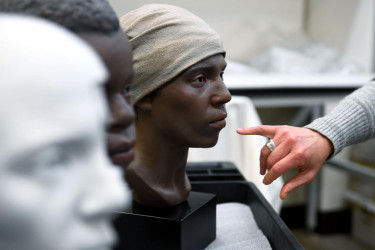Like so many Civil War battlefields, memorials dot the landscape at Olustee, Florida—the site of the largest battle fought in Florida that included multiple U.S. Colored Troop (USCT) regiments and white volunteer state regiments. Unlike other current Civil War sites managed by official U.S. government entities, no memorial exists on the field to memorialize the deceased U.S. soldiers—Black and white. In a Black cemetery nearby, separated from the preserved battlefield, private groups placed a U.S. monument to honor and commemorate the dead. Unknown to the casual visitor to the U.S. memorial, the remains of the U.S. Army deceased soldiers at Olustee, Florida, likely remain close to where they died: Black and white, Connecticut men and New Yorkers, free men and the formerly enslaved.At Olustee, the soldiers represent the interracial coalition that freed enslaved people, and simultaneously preserved the U.S., even though it cost them their lives. Their skeletal remains still lie in body bags in a mass grave dug by occupying forces after the war; they lay there unknown and un-honored because of the cause for which they gave that last full measure.
How did this happen in the U.S., where even traitors of a failed slave republic receive their due? First, the U.S. lost the battle to the Confederate Army on February 20, 1864. ’s––The incompetence of Brigadier General Truman Seymour, the U.S. Army commander, explains the defeat. He moved forward into Florida with no military intelligence of the position of the Confederate Army. They had moved into his path. As a result, U.S. and Confederate forces clashed fifty miles west of Jacksonville.
The Confederates had time to prepare for the U.S. forces. Two forces of comparable size met: one side defended prepared positions, the other attacked with limited prior planning. Defeated U.S. forces retreated leaving some of the living and all the dead in enemy hands. While this denouement was not unusual, the actions of some Confederates violated the laws of war when they executed some Black prisoners of war (POW). The Confederate “Black Flag,” or no mercy policy prompted some Confederates to murder Black POWs as part of the racialized military violence, as historian Kevin Levin asserts. Not all POWs suffered this fate, most captured Black and white U.S. soldiers spent the rest of the war at the infamous and deadly Andersonville prison camp, in Georgia; many died in that notorious hell hole before the war’s end. As for the dead at Olustee, they remain on the battlefield.







